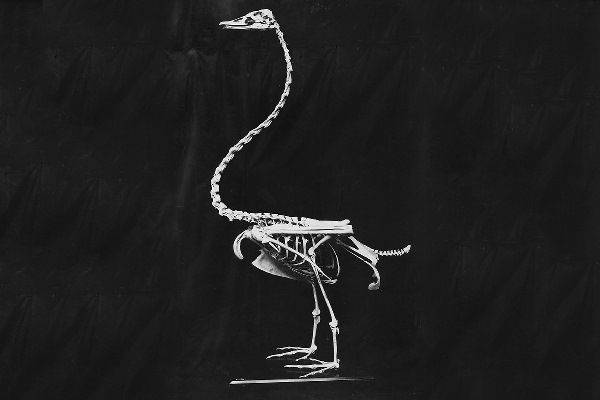In a new study, researchers confirm the existence of a huge avian, a mega-swan, which allegedly went extinct less than two centuries after the Polynesians colonized New Zealand in 1280.
It would confirm an ancient one Maori legend la (re) discovery of a black mega-swan in New Zealand. Here, before these more remote areas were colonized, a swan black swan lived, extinct around the 13th century.
Now, Nicolas Rawlence of the University of Otago and his team have used genetic techniques to confirm theexistence of that same mega-swan.
The presence of a prehistoric New Zealand swan has long been controversial. The legends of the Maori speak of the Poūwa, a large "swan creature" that kills and eats humans. Until now, there were different theories that approached myth to reality. Some have speculated that it could have been the Haast's eagle: a bird of enormous size and strength, extinct about 100 years after the arrival of the Maori perhaps due to excessive hunting and the loss of its natural habitat. But some paleontologists have suggested that this figure may refer to the Australian black swan (Cygnus atratus), which sometimes flies across the Tasman (or Tasmanian) Sea.
And today, in a new study, researchers would confirm the existence of a huge aviary, for an mega-cygno which would go extinct less than two centuries after the Polynesians colonized New Zealand in 1280.
Researchers have compared the DNA of 47 Australian black swans and 39 ancient swan fossils discovered at archaeological sites in New Zealand. Many of the fossils came from Isole Chatham, an archipelago about 650 kilometers east of New Zealand, home to the Maori.
The analyzes carried out suggest that the mega-swan "separated" from the C. atratus species about 1-2 million years ago. “We think Australian black swans flew to New Zealand at this time and then evolved into a separate species - the Poūwa,” explains Rawlence.
The team of scientists was able to reconstruct the general appearance of the Poūwa comparing the size and shape of the skulls, wings and legs of the fossils with modern C. atratus specimens and found that the Poūwa was about 20-30% heavier than the Australian black swans and weighed up to 10 kilograms.
The Pouwa also had longer legs and shorter wings, suggesting that it was unable to fly and that the predators were large birds such as eagles.
 Poūwa fossil at the Museum of New Zealand
Poūwa fossil at the Museum of New Zealand
Fossils show that Poūwa became extinct around 1450 AD, less than two centuries after the Polynesians colonized New Zealand in 1280. Since there was no climate or environmental change during this period, the only logical explanation is that they are States human beings are solely responsible for their disappearance plus, their eggs were allegedly eaten by rats that arrived in New Zealand with the Polynesian settlers. These factors, combined with the destruction habitats, would have led to their extinction.
A mega-swan, therefore, that it probably evolved from Australian black swans, so. If so, it is indeed a surprising discovery.
Germana Carillo
Photo credits


























